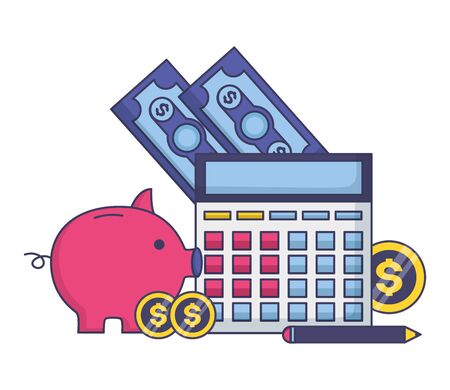1. Understanding the Importance of an Emergency Fund
Life is full of unexpected events—medical emergencies, car repairs, job loss, or urgent home expenses. Without an emergency fund, these financial surprises can lead to stress, debt, or even long-term financial instability. Even if youre on a tight budget, setting aside money for unforeseen circumstances is crucial for maintaining financial security.
Why an Emergency Fund Matters
Having an emergency fund acts as a safety net, preventing you from relying on credit cards or loans when unexpected expenses arise. Here are some key reasons why its essential:
(1) Financial Stability
An emergency fund ensures that you can handle sudden costs without disrupting your regular budget or dipping into essential savings.
(2) Avoiding Debt
Without savings, many people turn to high-interest credit cards or loans to cover emergencies. This can lead to a cycle of debt thats difficult to escape.
(3) Peace of Mind
Knowing you have a financial cushion reduces stress and allows you to focus on other aspects of life rather than worrying about potential financial crises.
How Much Should You Save?
The ideal size of an emergency fund varies based on individual circumstances. A good starting point is saving at least $500 to cover minor emergencies. However, financial experts recommend aiming for three to six months’ worth of living expenses for greater security.
| Savings Goal | Covers |
|---|---|
| $500 – $1,000 | Basic emergencies (car repairs, medical copays) |
| One month’s expenses | Short-term job loss or urgent bills |
| Three to six months expenses | Extended job loss or major financial setbacks |
2. Assessing Your Current Financial Situation
Before you start building your emergency fund, its essential to take a close look at your current financial situation. Understanding where your money comes from and where it goes will help you identify areas where you can start saving without sacrificing essential needs.
Analyzing Your Income
The first step is to determine your total monthly income. This includes:
- Your salary or wages
- Side hustles or freelance work
- Government benefits (if applicable)
- Any other sources of regular income
Tracking Your Expenses
Next, track all your expenses to see where your money is going. Break them down into two main categories:
(1) Essential Expenses
- Rent or mortgage payments
- Utilities (electricity, water, internet)
- Groceries and household necessities
- Transportation costs (gas, public transit, car payments)
- Insurance (health, car, home)
- Minimum debt payments
(2) Non-Essential Expenses
- Dining out and takeout
- Subscription services (Netflix, Spotify, gym memberships)
- Lifestyle spending (shopping, entertainment)
- Coffee runs and impulse purchases
Categorizing Your Spending
A helpful way to visualize your spending is by creating a simple table:
| Expense Category | Total Monthly Cost ($) | Essential or Non-Essential? |
|---|---|---|
| Rent/Mortgage | [Your Amount] | Essential |
| Groceries | [Your Amount] | Essential |
| Dining Out | [Your Amount] | Non-Essential |
| Coffee Runs | [Your Amount] | Non-Essential |
| Total Monthly Income | [Your Amount] | – |
Identifying Areas to Cut Back
The goal is not to eliminate all non-essential spending but to find opportunities to reduce unnecessary expenses while maintaining a comfortable lifestyle.
(1) Small Adjustments That Add Up
- Brew coffee at home instead of buying it daily.
- Limit dining out to special occasions.
- Pausе or cancel unused subscriptions.
- Bargain shop for groceries and use coupons.
- Cаrpool or use public transportation when possible.
(2) Setting a Realistic Savings Goal
Your emergency fund doesn’t have to be built overnight. Start small—aim for $500 or one months worth of expenses as an initial goal. Once you have assessed your financial situation, you can determine how much you can realistically set aside each month.
This evaluation process will give you a clear picture of your finances and help you take the next steps toward building your emergency fund effectively.

3. Practical Strategies to Save on a Tight Budget
Cut Unnecessary Expenses
One of the easiest ways to start building your emergency fund is by eliminating unnecessary expenses. Take a close look at your monthly spending and identify areas where you can cut back. Here are some common expenses you might be able to reduce or eliminate:
| Expense | Possible Savings Strategy |
|---|---|
| Subscription Services (Streaming, Magazines, etc.) | Cancel unused subscriptions or switch to free alternatives. |
| Eating Out | Cook at home more often and plan your meals in advance. |
| Coffee Runs | Brew your own coffee instead of buying it daily. |
| Impulse Purchases | Create a 24-hour rule before making non-essential purchases. |
Use Cashback and Savings Apps
Technology makes it easier than ever to save money without extra effort. Consider using cashback apps and digital tools that help you earn rewards or automatically set aside savings.
(1) Cashback Apps
- Apps like Rakuten, Ibotta, and Honey offer cashback on everyday purchases.
- Link your debit or credit card to earn automatic rewards when shopping online or in stores.
- Look for special promotions that increase cashback percentages during certain times of the year.
(2) Round-Up Savings Apps
- Apps like Acorns and Chime round up your purchases to the nearest dollar and deposit the difference into savings.
- This method allows you to save small amounts consistently without feeling the impact on your budget.
Automate Your Savings
If saving feels difficult, automation can make it effortless. By setting up automatic transfers, you ensure that money goes into your emergency fund before you have a chance to spend it.
(1) Set Up Automatic Transfers
- Most banks allow you to schedule automatic transfers from your checking account to a savings account.
- Start with as little as $5 or $10 per week—small amounts add up over time.
- If you receive direct deposits, consider splitting your paycheck so a portion goes directly into savings.
(2) Use Employer-Sponsored Savings Programs
- If your employer offers a payroll deduction option for savings accounts, take advantage of it.
- This method ensures consistency since the money is saved before you even see it in your checking account.
4. Boosting Your Income for Faster Savings
When youre on a tight budget, saving for an emergency fund can feel like an uphill battle. One of the best ways to accelerate your savings is by increasing your income. Whether through side gigs, freelancing, or other income-boosting strategies, finding extra sources of cash can make a big difference.
Exploring Side Gigs
Side gigs are a great way to bring in additional income without committing to a full-time job change. Here are some popular options:
| Side Gig | Estimated Earnings | Time Commitment |
|---|---|---|
| Rideshare Driving (Uber/Lyft) | $15-$25 per hour | Flexible |
| Food Delivery (DoorDash, UberEats) | $10-$20 per hour | Flexible |
| User Testing Websites & Apps | $10-$60 per test | A few minutes per test |
| Selling Handmade Goods on Etsy | $100-$1,000+ per month | Varies by effort |
| Tutoring Online (VIPKid, Wyzant) | $15-$50 per hour | Bilingual or subject expertise needed |
Diving Into Freelancing
If you have a skill like writing, graphic design, programming, or marketing, freelancing can be a lucrative way to earn extra money. Platforms like Upwork, Fiverr, and Freelancer make it easy to connect with clients looking for your expertise.
(1) Identify Your Skills
Your current job experience or hobbies may provide valuable skills that others are willing to pay for. Think about what you’re good at—writing, social media management, coding, etc.
(2) Create Profiles on Freelance Platforms
Create accounts on platforms like Fiverr and Upwork. Make sure to write a compelling profile and showcase previous work if possible.
(3) Start Small and Build Reputation
You may need to take lower-paying jobs initially to get positive reviews and establish credibility before raising your rates.
Selling Unused Items for Quick Cash
If you need fast cash to jumpstart your emergency fund, consider selling things you no longer use. Some great places to sell include:
- Facebook Marketplace: Sell household items locally with no fees.
- Poshmark & Depop: Great for selling clothes and accessories.
- eBay: Ideal for electronics, collectibles, and niche items.
- Craigslist: Perfect for furniture and larger items.
- Mecari: A user-friendly app for selling almost anything.
Taking Advantage of Passive Income Opportunities
If you’re looking for more long-term income streams that require less ongoing effort, passive income options might be worth exploring.
(1) Renting Out Space or Items
If you have an extra room, consider renting it out on Airbnb. You can also rent out tools, cameras, or even your car using platforms like Turo.
(2) Investing in Dividend Stocks or High-Yield Savings Accounts
If you have some savings already, putting them into dividend stocks or high-yield savings accounts can generate additional income over time.
(3) Creating Digital Products or Courses
If you have expertise in something, consider creating online courses or e-books that can generate sales over time without additional effort after the initial setup.
The key to building your emergency fund faster is combining multiple income streams while maintaining a sustainable balance with your time and energy. The more ways you can increase your earnings, the quicker youll reach your financial goals!
5. Staying Consistent and Motivated
Building an emergency fund on a tight budget requires discipline, patience, and motivation. It’s easy to start strong but staying consistent can be a challenge. Here are some practical tips to help you stay on track with your savings goals.
Setting Realistic Goals
One of the biggest reasons people struggle with saving is setting unrealistic expectations. Instead of aiming for a large amount right away, break it down into smaller, manageable milestones.
| Goal Type | Example |
|---|---|
| Short-Term Goal | Save $50 per month |
| Mid-Term Goal | Reach $500 in six months |
| Long-Term Goal | Build a $1,000 emergency fund within a year |
Tips to Stay Disciplined with Saving
(1) Automate Your Savings
If you tend to forget or procrastinate, set up an automatic transfer to your savings account. Even small amounts, like $10 per week, can add up over time.
(2) Track Your Progress
Create a simple tracking system using a spreadsheet, budgeting app, or even a notebook. Seeing your progress visually can keep you motivated.
(3) Avoid Temptation
If you often dip into your savings for non-emergencies, consider keeping your emergency fund in a separate bank or an account that’s not easily accessible.
Celebrating Small Milestones
Savings doesn’t have to feel like a chore. Celebrate small wins along the way to stay motivated.
(1) Reward Yourself (Within Budget)
If you hit a savings milestone, treat yourself to something small like a coffee from your favorite café or a movie night at home.
(2) Share Your Progress
Telling friends or family about your achievements can create accountability and encouragement.
(3) Reflect on Your Accomplishments
Taking time to acknowledge how far you’ve come can keep you inspired to continue growing your emergency fund.


